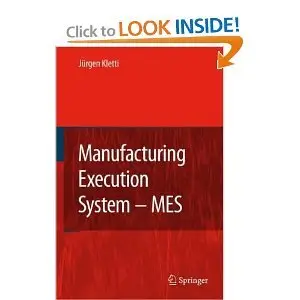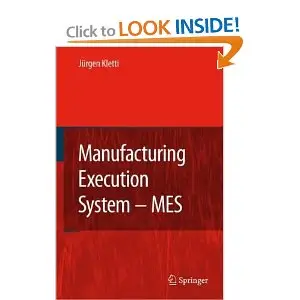Manufacturing Execution System - MES
Springer; 1 edition | June 28, 2007 | ISBN-10: 3540497439 | 272 pages | PDF | 7.4 Mb
Springer; 1 edition | June 28, 2007 | ISBN-10: 3540497439 | 272 pages | PDF | 7.4 Mb
The classical factory fades into history as production plants today develop into modern service centers. Problems in management arise for which many companies are not yet prepared: economic efficiency of modern added value is not a property of products alone but of the process. Decisive potential in business now is a question of process capability, rather than production capability. Process capability in business requires real-time systems for optimization. Business-IT needs to be developed from telecommunications and ERP to real-time services, which are not offered by the prevailing ERP systems.
Today, only modern Manufacturing Execution Systems (MES) offer real-time applications. They generate current as well as historic mappings of production facilities and thus they can be used as basis for optimizations. It is important to map the supply chain in real time. Increasing complexity in production requires an integrated view of the production and service facilities: detailed scheduling, status collection, quality, performance analysis, tracing of material and so on have to be recorded and displayed in an integrated way.
MES (Manufacturing Execution System) where developed in the mid-nineties. MESA (Manufacturing Execution System Association) standardized applications and appointed three application layers of production, as a principle. Further standardizations on this subject are already being developed, like ISA S95. Expectations regarding MES are high, related to TQM, SIX Sigma, production scheduling or optimized material movements.



